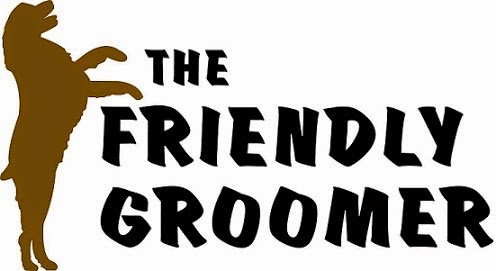CLICK CLICK CLICK CLICK CLICK!
For those of us with hardwood or tile floors in the home, it's a familiar sound. Once we can hear this sound it's time for every dog's least favourite thing... Having their nails clipped.
For those of us with hardwood or tile floors in the home, it's a familiar sound. Once we can hear this sound it's time for every dog's least favourite thing... Having their nails clipped.
Now, let's be honest. Many dogs (including both of mine) HATE having their nails clipped. They'll fuss, whine, pull their paws away and occasionally use their teeth to protest as well! But no matter how much your pup may disagree, keeping your dog's nails short is an important part of a regular grooming routine. Longer nails over time can negatively affect your dog's gait and damage bone structure in the feet. In extreme cases, nails can grow long enough to curl back around into the pads of the feet.
Needless to say, both of these possibilities are extremely painful but can be easily avoided by regular clipping. Depending on how often your dog walks or runs on pavement (which wears
down the nail naturally), their nails should be addressed either via
clipping or filing every 4-6 weeks.
For the DIY'ers
The other tool you'll need in your nail trimming arsenal is styptic powder.
The Last Resort
Final Thoughts
-Peter
For the DIY'ers
Trimming
your dog's nails from home is also an excellent option. Set yourself up
for success by ensuring you have the right tools.
The
most important thing you'll need is a good pair of nail clippers. There
are a few different styles to choose from, but I recommend and use
scissor style clippers. This style of clipper gives you the most
leverage and control. A photo of the clippers we sell in our salon is
shown below. These sturdy, stainless steel clippers are durable and
have rubber coated handles for easy gripping.
The other tool you'll need in your nail trimming arsenal is styptic powder.
 |
| Kwik Stop brand styptic powder |
Styptic powder is
an anesthetic as well as a cauterizing agent
designed to stop bleeding on contact. Bleeding can occur when you
accidentally cut the nail too short and clip the nail's quick.
 |
| A diagram of various nail lengths and proper clipping length |
Some websites and blogs will
suggest that baking powder or flour is a suitable alternative, but in my
experience there is no substitute for the real thing. Most containers
cost under $10 and will last for years if you're only doing your own
dog's nails at home (and you're careful!)
Once you've got the tools, you're ready to start clipping! Check out this video for step-by-step instructions.
Once you've got the tools, you're ready to start clipping! Check out this video for step-by-step instructions.
The Easy Answer
The
easiest way to avoid the heartache and frustration of attempting
to clip your own dog's nails at home is to take them to the groomer on a
regular basis. Sometimes, the most wiggly of dogs who just won't
let their owners do them often are just fine when they're on a groomer's table.
 |
| Don't feel badly if you can't clip your dog's nails. You're not alone! |
Many dog groomers offer nail clipping as a walk-in
service and can often do
them while you wait for a reasonable price.
 |
| Nail clipping teamwork at The Friendly Groomer |
Some
dogs absolutely REFUSE to allow their nails to be trimmed by their
owner, or by a groomer. The last resort should never be to leave nails
to grow un-clipped. Unfortunately, no matter how upset or aggressive a
dog may become, it still must be done. In these cases, I recommend taking your dog to the vet. Vets can ensure both your dog and the
person attempting to trim their nails remain safe.
Keeping
your dog's nails trimmed is more than just a luxurious pawdicure.
Whether you decide to bring them to a groomer, a vet or even do it
yourself, it's an important part of keeping your dog at their best!
-Peter


